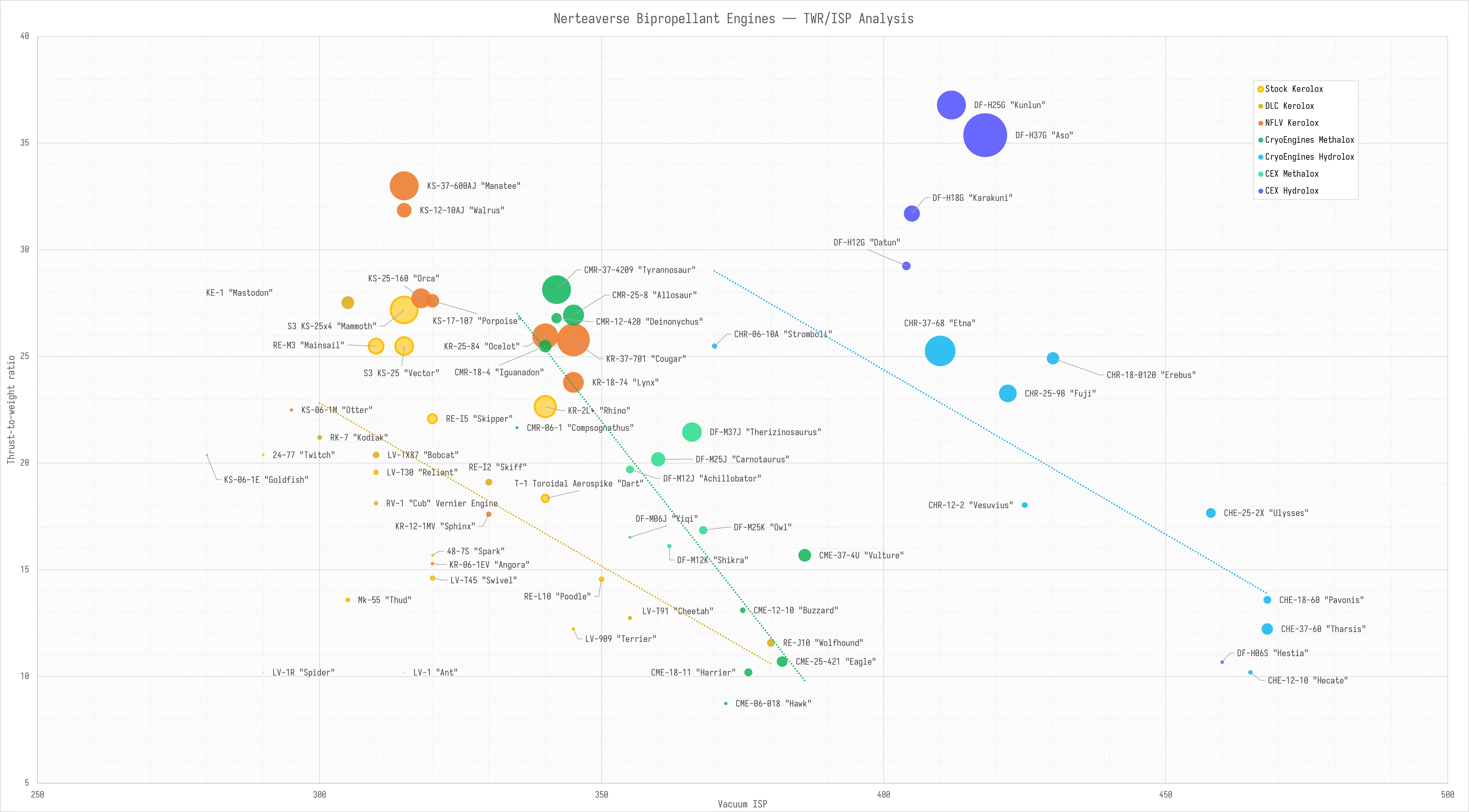Kerbal Space Program (KSP) is a strategy sandbox game where players are challenged to design and fly their own spacecraft in a realistic physics simulation.
The highly technical nature of this game has granted it a very passionate modding community, many of whom are often experts in aerospace engineering or video game industry professionals.
Mod authors often worked in silos with little coordination, and new mods lacked clear gameplay design and intent.
New mods were often made based on guesswork and intuition. Over the course of 13 years this led to a modding landscape that, while populated with visually compelling creations, still often struggled to improve player experiences...
Modded parts were frequently over- or under-powered compared to other parts, even within the same mod.
Mods unintentionally reduced player choice, as some parts were so powerful (or so weak) that they became no-brainers.
Players often mixed and matched mods from different authors, who often approached gameplay in very different ways.
Players had to spend time trying to understand what these modded parts even did in the first place.
Mod authors developed based on guesswork and intuition, with few guiding principles or means to evaluate success.
Without direction, mod developers waste time on ineffective designs, while reducing the quality of user-generated content.
Develop an engine parts mod for KSP that put compelling strategic gameplay first.
There were three goals that I'd need to hit with my mod to rise to this challenge:
Not only would this provide a means to ensure the mod expanded on the strategic gameplay choices instead of limiting them, but would also provide a means to identify unaddressed gaps in the modding space. It'd also better ensure cohesion with many existing, popular mods, which in turn would make it more natural-feeling for players to install.
The visual design of parts in the game need to communicate their function and purpose to the player, helping them navigate the complexities of the game's building mechanics and allow them to focus on strategising and vehicle design. Oh, and these parts would have to look real good alongside their peers, too!
If successful, I'd want to make sure that myself and others can leverage this same process, helping to raise the standard of quality for our creations in the community.




























